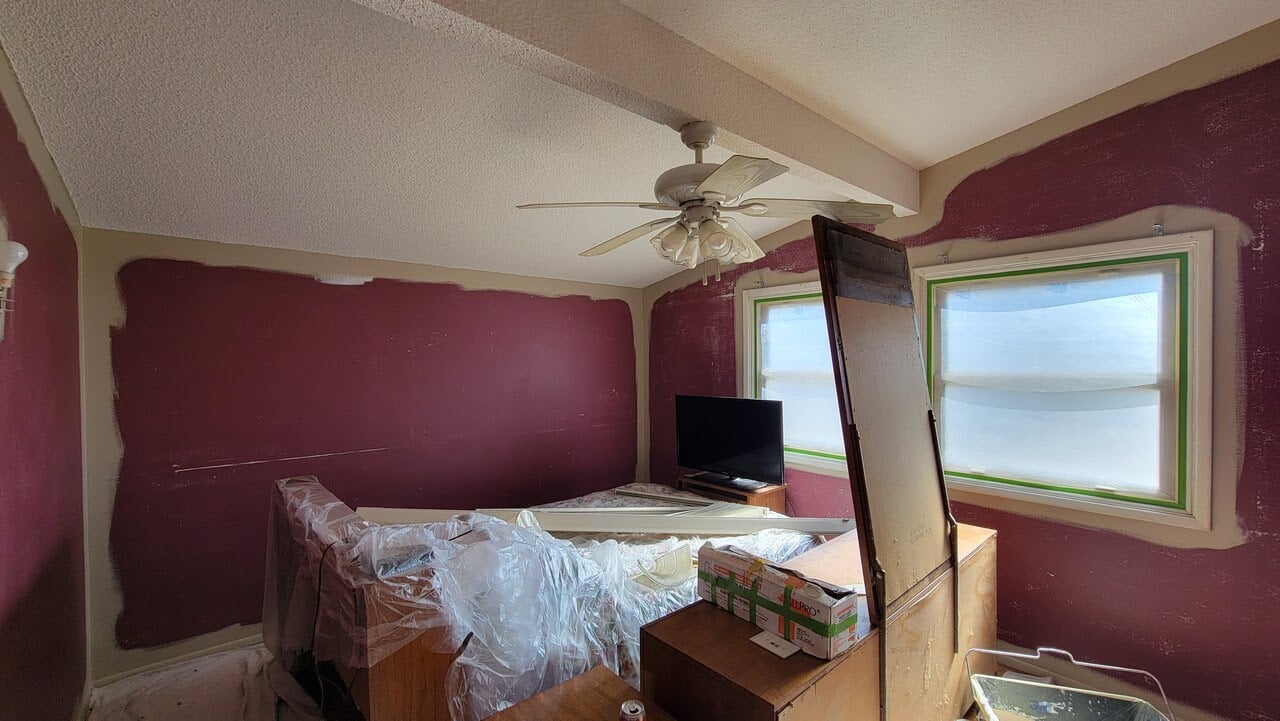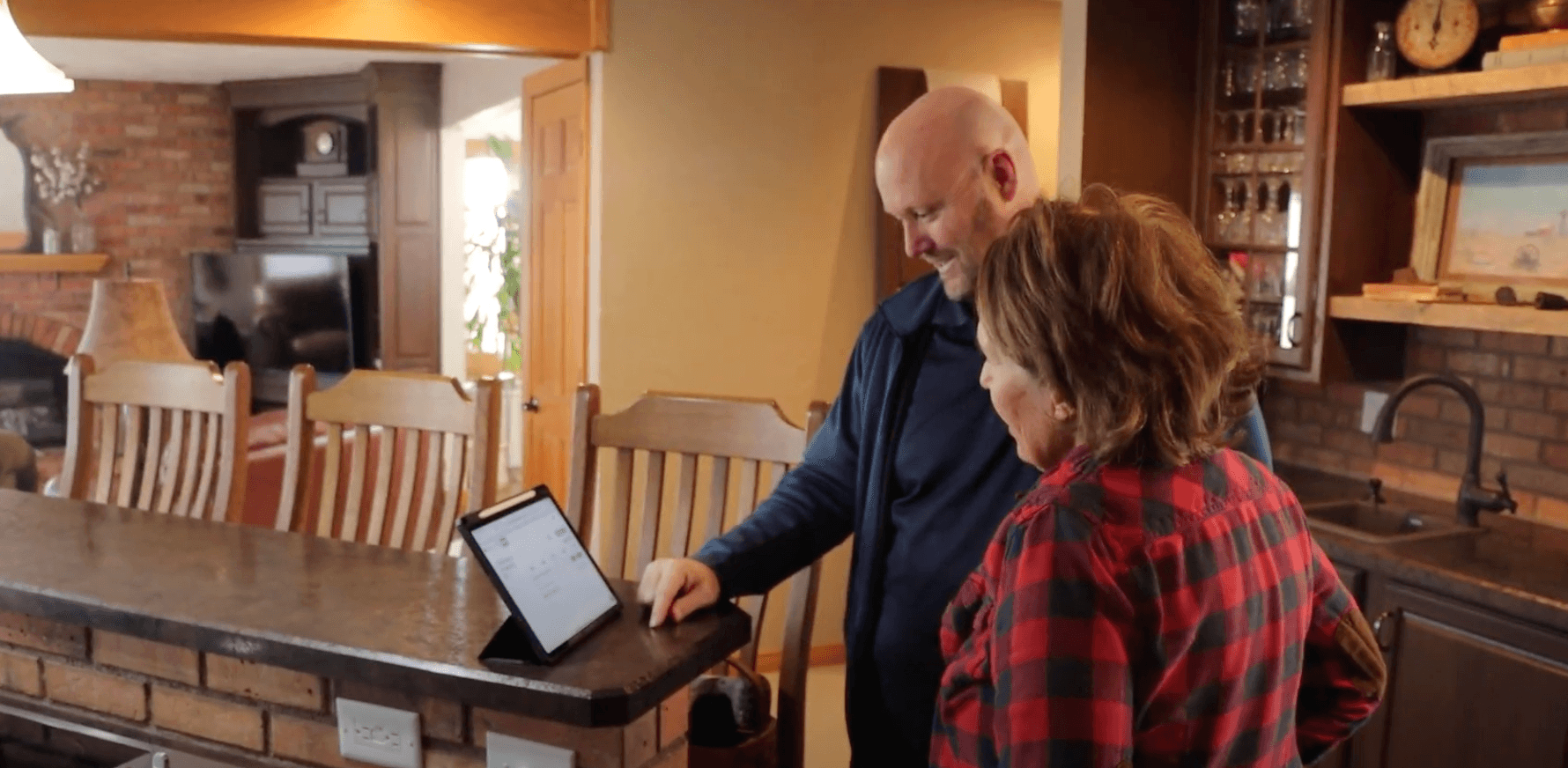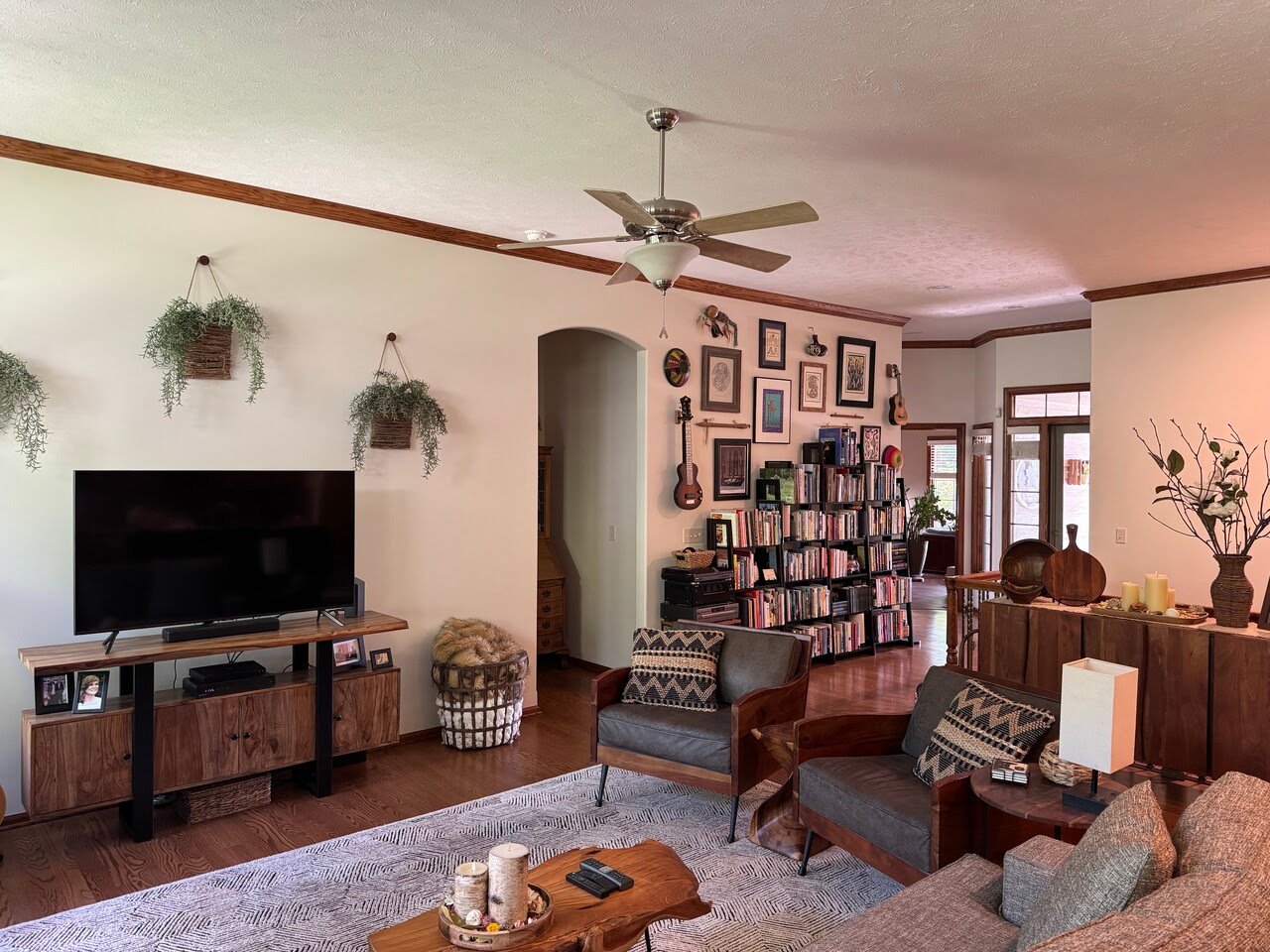How to Paint Corners and Walls Near a Ceiling in Omaha, NE
March 17th, 2019
3 min read
By Bill Carlson

A fresh coat of paint updates and brightens the interior of your home in Omaha, Nebraska, more than any other decorating technique does. If you've ever tried a DIY approach to painting the interior of your house, you must have had trouble painting the tight corners and walls near the ceiling without getting paint on the ceiling.
Corners can prove tricky since it's challenging to reach these with a paint roller without getting streaks of paint on the ceiling. However, with the right paintbrush and correct techniques, you can paint even coats in those corners and walls near the ceiling without making a mess. If you want to avoid time-consuming and unnecessary touch-ups on the ceiling after painting your walls, consider the following techniques.
Brush & Roll Painting is a premier interior painting company in Omaha, NE. WIth our expertise since 1996, we have learned the most efficient and professional techniques for interior painting. With these methods, we can provide flawless and clean results.
Steps to Painting Corners and Walls Near a Ceiling

1. Cover the Floor and Furniture
Before you start painting, it's essential to prepare the room properly. Remove all items that you can easily take out, such as wall hangings, décor, furniture, and appliances. Anything that can't be moved should be covered with plastic sheets to protect them from any accidental spills or splatters.
Don't forget to cover electronic switch plates and any other outlets to prevent paint from getting on them. Proper preparation is key to ensuring a smooth and successful painting project.
2. Paint the Ceiling First
After completing the painting of the ceiling, it is crucial to allow it to dry thoroughly before moving on to the next step. Applying painter's tape on a partially dry surface can lead to the paint peeling off, ruining all your hard work. The drying time can vary depending on the type of paint used, ranging from 2 to 5 hours. It's essential to exercise patience during this time to ensure a flawless finish without any mistakes.
Taking the time to let the ceiling paint dry also allows you to assess the color and coverage before proceeding with the walls. This step not only prevents any paint drips from ruining the freshly painted ceiling but also provides a clear boundary for when you start painting the walls. By following this sequence, you can streamline the painting process and minimize the need for touch-ups or corrections later on.
-2.png?width=538&height=281&name=Untitled%20design%20(5)-2.png)
3. Apply the Painter's Tape
Start by covering the ceiling near the wall using painter's tape. It is recommended to cut the tape into manageable lengths, typically around 2-3 feet long, to make it easier to handle and align along the edge of the ceiling. When applying the tape, ensure that one end is positioned in the corner where the ceiling meets the wall, pressing it firmly against the ceiling to create a tight seal.
Be vigilant in smoothing out any air pockets or bubbles under the tape, as these could potentially allow paint to seep through. Continue applying strips of tape until you have successfully encircled the entire perimeter of the ceiling, creating a protective barrier for the walls and corners during the painting process.
Watch the video above to see a professional painter brushing paint along the top corner of a wall next to a ceiling.
4. Paint Along the Tape Using an Angled Brush
Pour about 500ml of the paint into a small bucket or container. Using an angled brush, dip it in the paint, with most of the paint at the paintbrush's 1-inch bottom end. A bulkier brush could rub the excess paint against the ceiling. A flat angled paintbrush will ensure that no accidental paint gets to the ceiling as you paint along the tape.
There are many products on the market that help with a smooth flat edge along corners and tight lines. You can try these products out if you believe they are worth a shot, but a paintbrush, tape, and a steady hand should be all you need.
Lay your paintbrush flat against the wall, starting at a corner of the room. The brush's bottom edge should barely touch the painter's tape to ensure that the paint extends to the wall's highest point. Use the paintbrush to paint a section of 5cm from the top of the wall. This will allow you to paint the rest of the wall using a roller with ease.
Always move with caution, after all, practice makes perfect.
The process of painting along the entire perimeter of the room is known as "cutting in," which is commonly used by pro painters when applying paint to tight spaces like this. In the end, you should have a painted strip of 5cm all around the top of the wall, in the corners, and along the baseboards or trim.
Then, you can paint the rest of the room, as usual, using a paint roller.
Painting Your Walls and Corners By a Ceiling
Painting walls and corners near a ceiling can be quite tricky for any first-time or inexperienced painter. With the above guidelines, it should be relatively easy to paint the corner and walls close to the ceiling without making a mess.
If you're unsure you can make it, you should probably hire a professional painting contractor in Omaha, Nebraska, for help.
At Brush & Roll Painting, we know interior painting is an investment into your home. It's important that your project is done right and gives you results you love. For a high-quality, professional interior painting project, get a quote from Brush & Roll Painting in Omaha, NE.
While taking on any interior painting project, whether you are doing it yourself or hiring a professional in Omaha, you should be confident throughout the process. To mark off each step of the project as it goes, download your interior painting project checklist.
Bill is the owner and operator of Brush & Roll Painting. Bill Carlson is a second-generation painter. He grew up working with his father’s painting and restoration company. After graduating from Bennington High School, he served in the US Navy, traveling with the boxing team. While this was a great opportunity to see the world, it also made him realize how much he loved his little world here in Nebraska. He settled back into the painting industry, working with his brother. It wasn’t long before Bill’s entrepreneurial spirit pushed him to start his own business. Always one for a challenge, he longed to prove to himself that he could be as successful on his own as both his dad and brother were.















-Jul-23-2025-02-21-33-5468-PM.png?width=800&height=418&name=Blog%20Post%20Image%20Size%20(2)-Jul-23-2025-02-21-33-5468-PM.png)




-Oct-22-2025-01-39-19-5208-PM.png?width=800&height=418&name=Blog%20Post%20Image%20Size%20(1)-Oct-22-2025-01-39-19-5208-PM.png)





